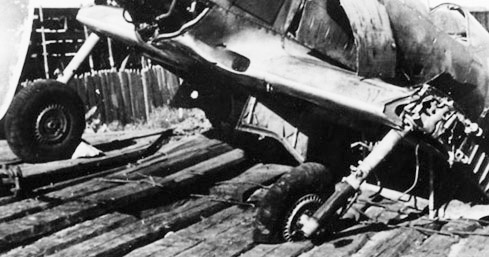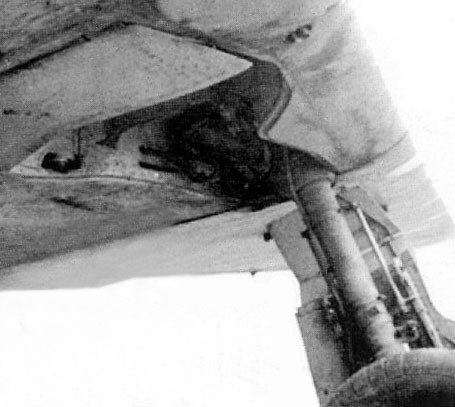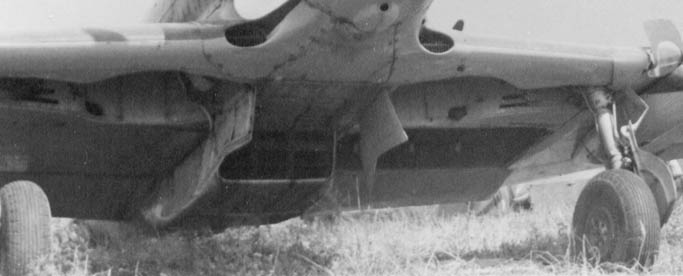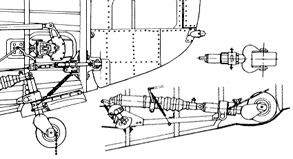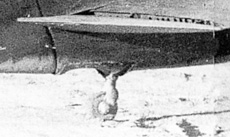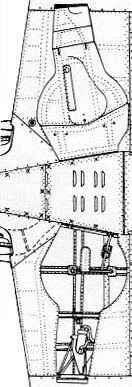
The shock absorbers had a 270 mm stroke, and were filled with a 70/30 glycerine/alcohol mix.
The shock absorber was covered by a rubber manifold to avoid dust adhesion on sliding surfaces. A knee prevented the rotation of the wheel axis.
The tubed tires were 600x180 mm.
The undercarriage bay is closed on its sides, and has a small step all
around to locate the doors when retracted.
It has 3 small slots on its rear surface to pass air pipes for the
actuator and the wheel brake and some wires.
When the wheel is up, it is locked by a spring mechanism, that can
be released pulling a wire.

